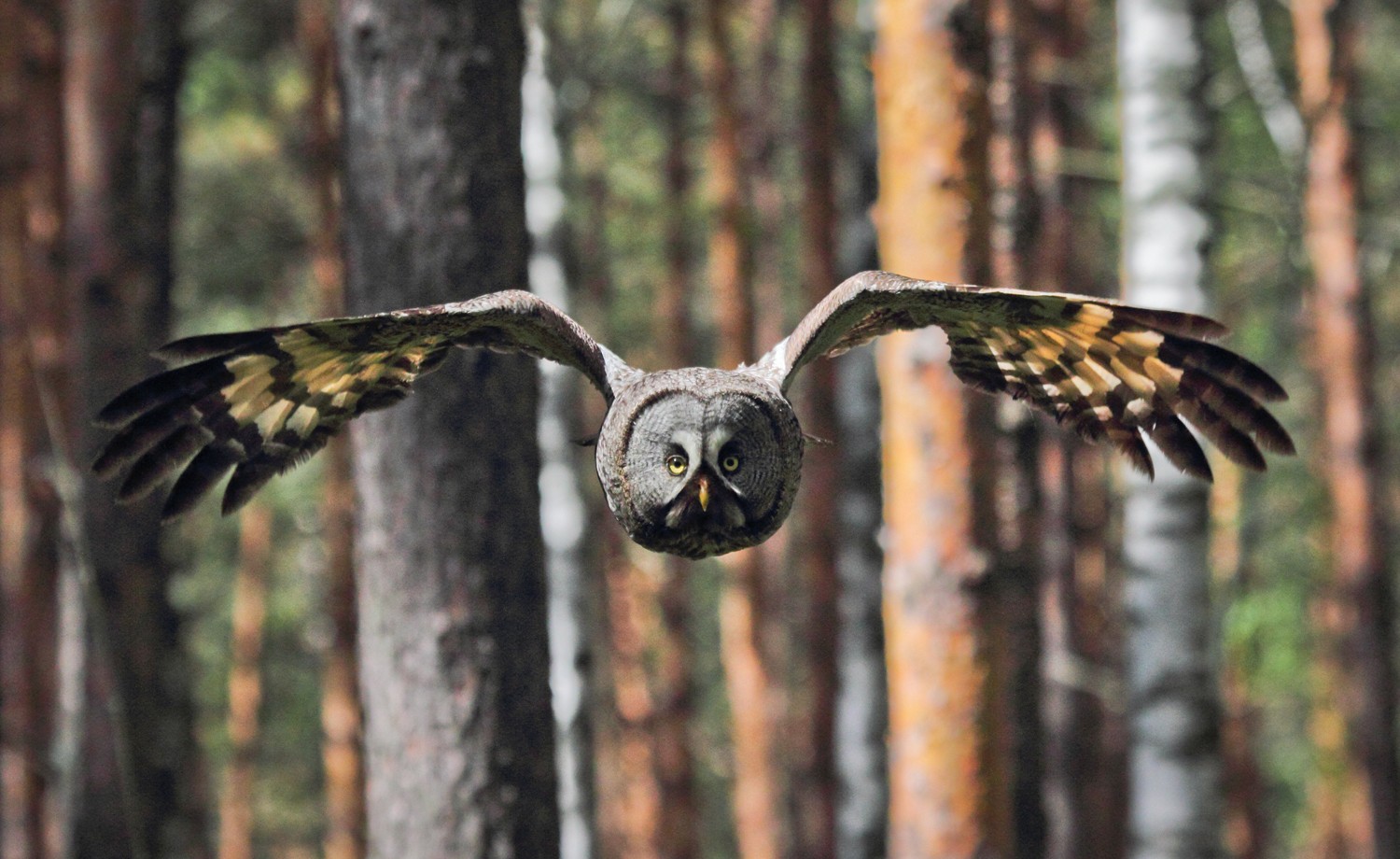Great Grey Owl
A species of Earless Owls Scientific name : Strix nebulosa Genus : Earless Owls
Great Grey Owl, A species of Earless Owls
Botanical name: Strix nebulosa
Genus: Earless Owls
Content
Description People often ask General Info
 Photo By Levashkin , used under CC-BY-SA-4.0 /Cropped and compressed from original
Photo By Levashkin , used under CC-BY-SA-4.0 /Cropped and compressed from original Description
Adults have a large rounded head with a grey face and yellow eyes with darker circles around them. The underparts are light with dark streaks; the upper parts are grey with pale bars. This owl does not have ear tufts and has the largest facial disc of any raptor. There is a white collar or "bow tie" just below the beak. The long tail tapers to a rounded end. In terms of length, the great grey owl is believed to exceed the Eurasian eagle-owl and the Blakiston's fish owl as the world's largest owl. The great grey is outweighed by those two species as well as several others, including most of the genus Bubo. Much of its size is deceptive, since this species' fluffy feathers, large head and the longest tail of any extant owl obscure a body lighter than that of most other large owls. The length ranges from 61 to 84 cm (24 to 33 in), averaging 72 cm (28 in) for females and 67 cm (26 in) for males. The wingspan can exceed 152 cm (5 ft 0 in), but averages 142 cm (4 ft 8 in) for females and 140 cm (4 ft 7 in) for males. The adult weight ranges from 580 to 1,900 g (1.28 to 4.19 lb), averaging 1,290 g (2.84 lb) for females and 1,000 g (2.2 lb) for males. The males are usually smaller than females, as with most owl species. The call of the adult is a series of very deep, rhythmic whoos, which is usually given in correlation to their territories or in interactions with their offspring. At other times, adults are normally silent. The young may chatter, shriek or hiss. Tame owls may produce higher-pitched hoots when given food by humans. 
Size
61-84 cm (24-33 in)
Life Expectancy
18.75 years (wild), 27 years (captivity)
Nest Placement
Tree
Clutch Size
2 - 5 eggs
Number of Broods
28 - 36 days
Nestling Period
26 - 29 days
Feeding Habits
Great Grey Owl predominantly feeds on small mammals, like voles, gophers, mice, moles, chipmunks, and lemmings. Great Grey Owl hunts day and night by listening for prey beneath the snow from perches, then hovers and dives talons-first to capture it.
Habitat
Great Grey Owl's habitat predominantly consists of expansive mature coniferous or mixed forests, often bordering open areas such as taiga bogs and meadows. They are typically found at altitudes ranging from 2,500 to 7,500 feet, with a preference for dense wet evergreen forests. During winter, some migrate to oak woodlands and mixed forests at lower elevations. Their survival hinges on a blend of forested and open landscapes that support their hunting practices.
Nest Behavior
Prior to settling, great Grey Owl may inspect potential nest sites for over two weeks and often return to established sites annually. Egg-laying occurs directly within these chosen sites without additional nest construction. Parental care involves incubation and protection of the young by both parents.
Nest Characteristics
Great Grey Owl typically utilizes pre-existing structures for nesting, such as abandoned raptor or raven nests, broken treetops, or squirrel nests. They may also utilize human-made platforms or mistletoe clumps. Great Grey Owl do not modify these nests or contribute additional materials.
Dite type
Carnivorous
People often ask
General Info
Feeding Habits
Bird food type
Bird Feeder Type

Platform
Behavior
Great Grey Owl exhibit nocturnal and crepuscular tendencies but are also diurnal hunters when rearing young or during wintertime, frequenting open meadows and forest clearcuts. They excel in sound triangulation due to asymmetrical ear openings, enabling precision hunting even with thick snow coverage. While breeding pairs form temporarily, great Grey Owl are solitary in the off-season, vigorously defending territories with intimidation displays and physical confrontations if necessary. Seasonal movements may occur when prey scarcity necessitates migration to areas with less snow.
Species Status
Not globally threatened.